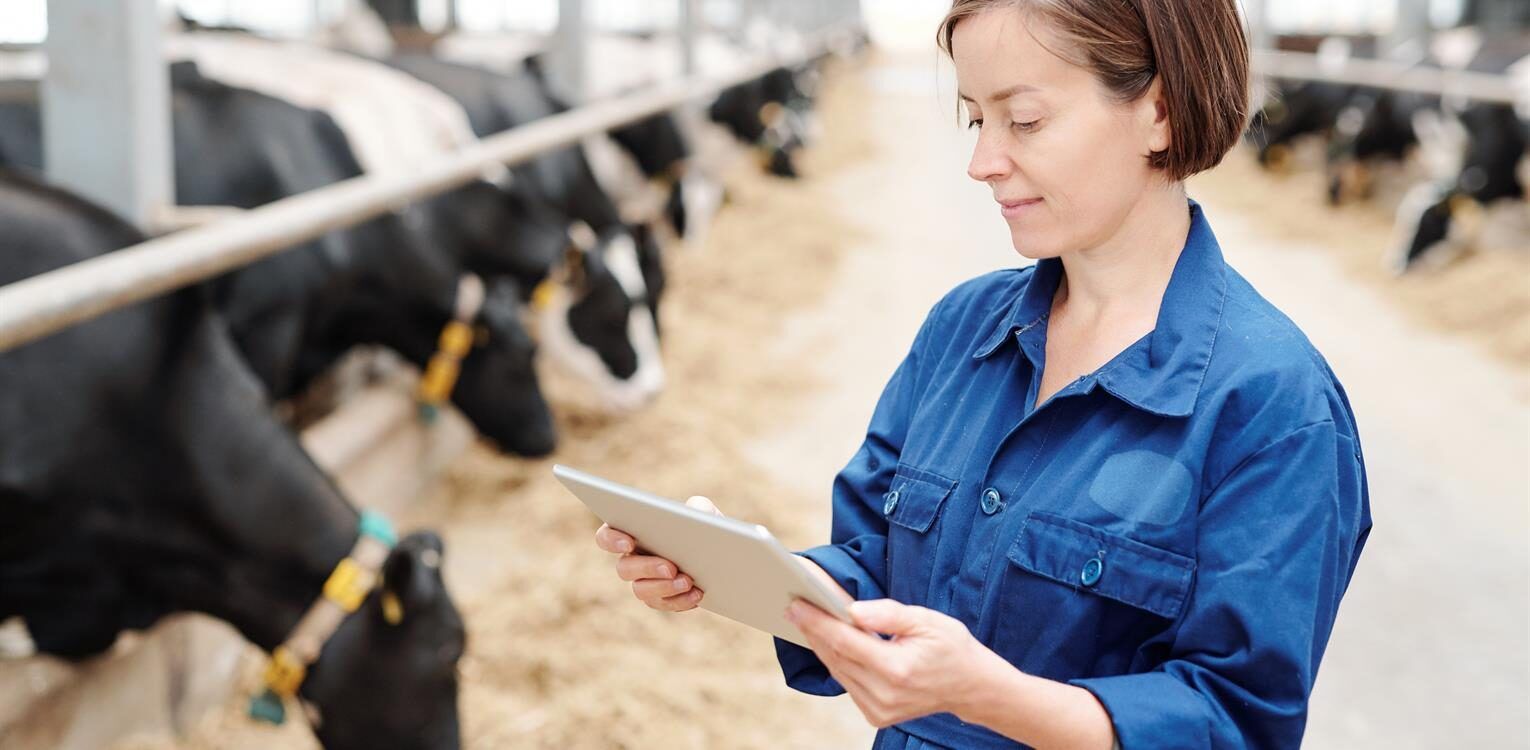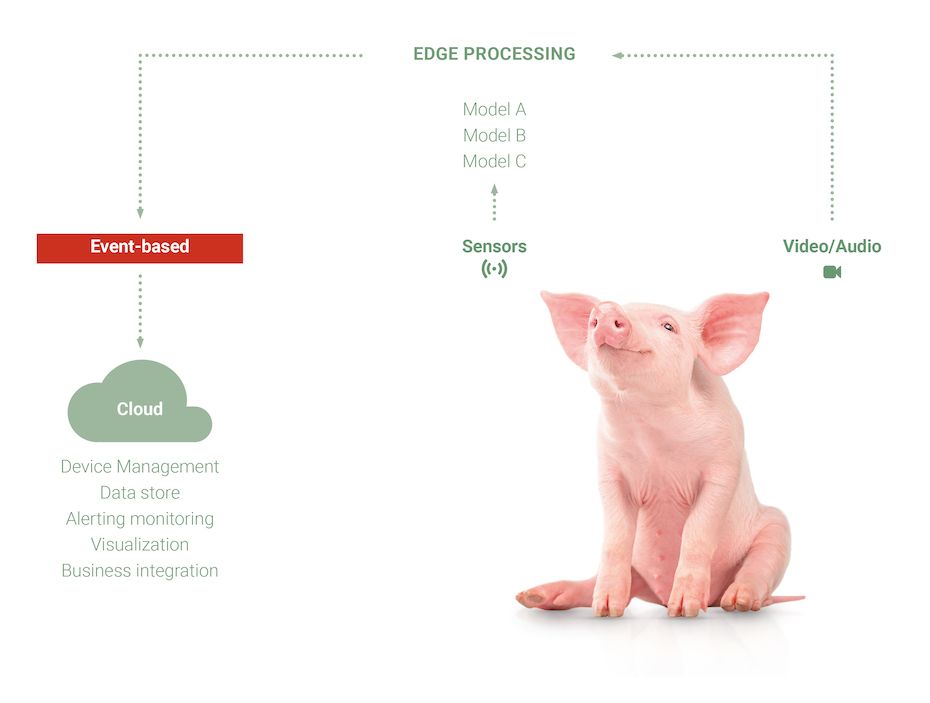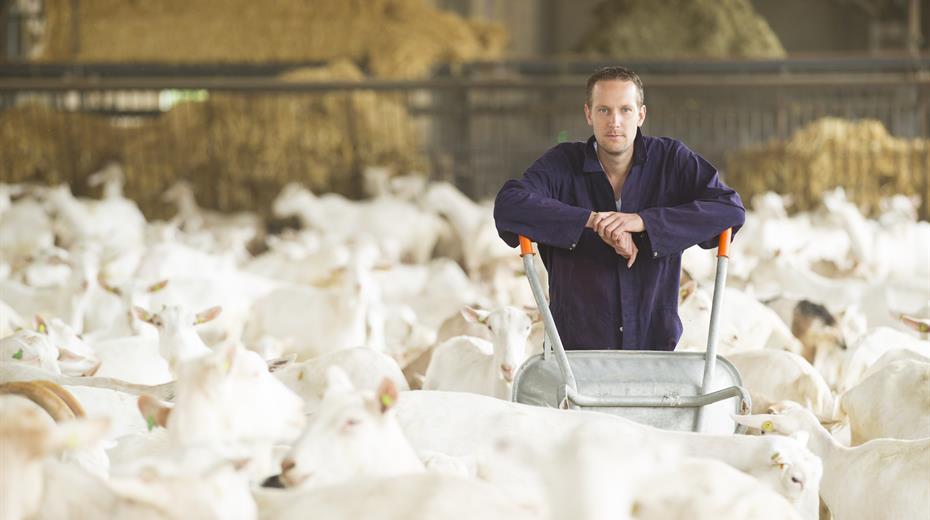Animal welfare is compulsory, sustainability is a hot topic and efficiency is an evergreen. By implementing a digitalization of farming methods, we are combining these three elements seamlessly, to streamline livestock management methods and help improve things for animals and humans alike. By using sensors, cameras and other technology on the farm to monitor the rearing of animals, we are helping businesses to optimally control their value chain.
How Machine Learning is Helping Farmers and Livestock

The Digitalization of Farming and Livestock Management
Agriculture is facing huge challenges; increasing yields, reducing the use of chemicals, protecting the environment, the climate and livestock, producing healthy food and providing customers and suppliers with comprehensive documentation of the entire process. Digitalization of farming processes and livestock management is the only way to handle the various requirements.
The industry can certainly not be accused of procrastinating. The digitalization of agriculture is happening at a fast pace with GPS-controlled combine harvesters on the rise, satellite imagery optimizing the use of fertilizers, herds being managed via agriculture apps and applications and smart feeding systems being employed to lower methane emissions. Added to that, customers increasingly want to know the background and history of the animals before they buy the meat, and understandably so. Therefore, a documented life journey of livestock in the face of consumer demand is an essential for producers, with animal welfare and sustainable pig, cow and chicken farming making efficient stable operations and logistics a necessity in an ever more competitive marketplace.

An IoT concept applied to a digital stable.
Digital Farm: Turning the Stable Into a Shop Floor
New technologies are a powerful tool for gathering information on livestock in stables and developing preventive measures to improve animal welfare. We have developed an IoT concept that addresses these challenges, and which digitalizes farms. By advising what sensors are required, and how cameras can be optimally configured to support machine learning models, we are able to help farms and livestock businesses take their operations to a whole new level. The image lays out how the infrastructure of such an IoT concept would operate, and highlights the key components for a fully digitalized stable environment.
Data as the Basis for Compliance in Digital Farming
In a proof of concept, we devised a system of cameras, microphones and other sensors that were installed in a stable, where machine learning techniques were used to collect data, recognize patterns and create reports. For example, the AI can check whether the farmer is meeting all the legal requirements. Data is the only way to show that statutory daytime light levels are being complied with, and is just one example of how data-driven insights can ensure that identified animal welfare violations are tracked and farmers are advised accordingly.
AI Will Take Over Routine Stable Tasks in the Shift To Farming Digitalization
When farmers go into the stable, they have to check the animals, assess their weight, measure ambient temperature, sense their stress levels and provide them with feed and water. These control rounds could be replaced by cameras, image recognition, microphones and sensors for CO2, humidity and temperature, which can carefully record and control measurements. Conditions in which the livestock is kept could then be improved in a more efficient manner, and lead to increased sustainability.
Finding the Right Slaughter Date
In addition to their holding conditions, the technology can also be applied to the digitalization of livestock. For example, the AI records the size and weight of each pig and can tell the farmer in advance when the ideal slaughter date will be. The aim is to obtain the best meat and the best price while ensuring the efficient use of animal feed. The information can also be used to optimize transportation from the stables to the slaughterhouse. Knowing the weight of the pigs means that truck loads can be optimized without breaching the statutory regulations.
Planning in the SAP System
The digital twins of stables and livestock also mean that simulations can be run and forecasts prepared, as we help businesses map out future scenarios. By transferring the data to the customer’s SAP system in the future, we would enable the company to improve its planning. Because the data could be recorded at a very early stage – and not only when the animals are slaughtered – supply and demand on the market could be adjusted ahead of time using a big data solution and data analytics, for example. By developing an SAP backbone for the client – the Digital Core – the business now has a framework for innovation.

Three Strong Drivers for Transparency
The agriculture industry is increasingly interested in making its processes more transparent, and the impetus for these innovations is coming from different directions; animal welfare, sustainability and efficiency. Economies of scale are another consideration, and the expansion of a digitalized approach to farming across wider geographic territories, both domestic and international, would serve to underline the incredible potential offered by the livestock food production industry. Furthermore, the animal data as a whole is useful, e.g. for other institutions on the market, such as authorities, or the livestock owners themselves.
Broadband Internet in the Stable
The main problem is not a lack of AI, IoT or big data, but a more fundamental IT requirement: Farmers need broadband Internet access if they want to digitalize their stables. The corresponding costs – which can vary depending on the size, remoteness and existing communications infrastructure in the territory where the farm is located – must be included in any business case. The focus right now is on identifying barriers along the way and looking for solutions. It will take some time to determine which architecture and infrastructure best meet the requirements so that the system could be scaled, but time is on the side of the digitalization of farming, as long as consumers continue to care about animal welfare. With the ever-growing importance placed on quality in food and production conditions, the digital stable would help to continue driving this strive for excellence where it is already in motion, and to get it off the ground and standardized in markets where there is still some way to go.
Let’s talks about how we can help you with digitalization.
